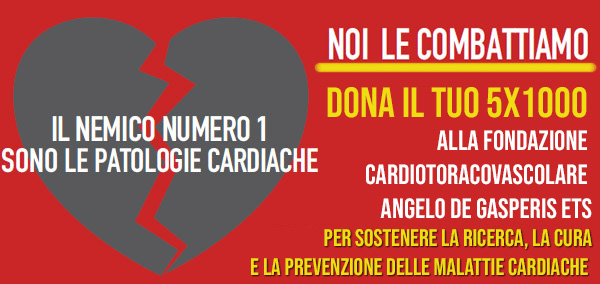MEDICI


Fondazione Cardiotoracovascolare Angelo De Gasperis ETS
P.IVA 09536810154
Contattaci
Cookie Policy - Privacy Policy - Obblighi di trasparenza e pubblicità ex art. 1 co. 125-129 L. n. 124/2017
Visita i nostri progetti: Fai un gesto di cuore - Storie a lieto fine
P.IVA 09536810154
Contattaci
Cookie Policy - Privacy Policy - Obblighi di trasparenza e pubblicità ex art. 1 co. 125-129 L. n. 124/2017
Visita i nostri progetti: Fai un gesto di cuore - Storie a lieto fine






